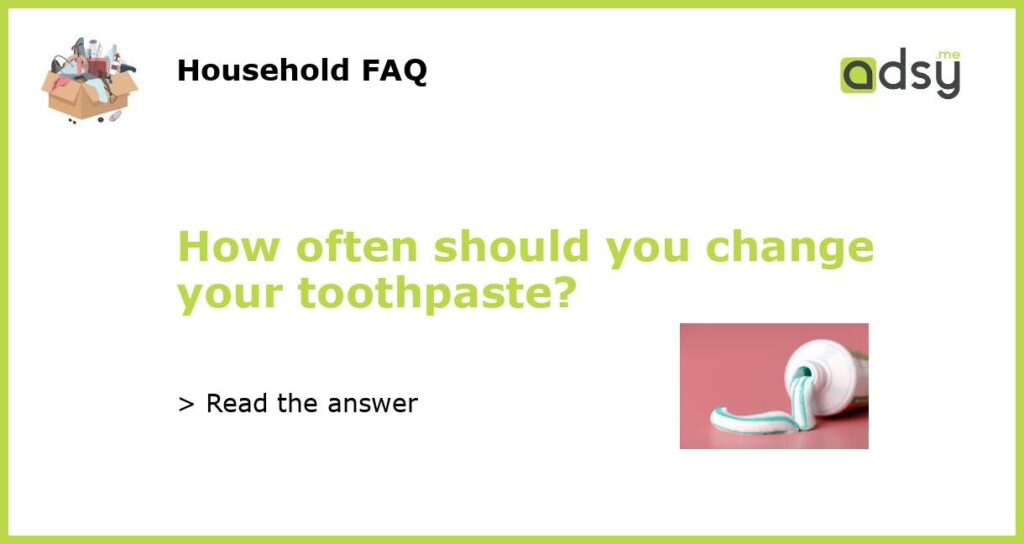How often should you change your toothpaste?
When it comes to dental hygiene, toothpaste plays a crucial role. It helps remove plaque, prevent tooth decay, and freshen breath. But how often should you change your toothpaste? While the answer may vary depending on various factors, there are some general guidelines to follow. Let’s delve into this topic and discover how often you should consider changing your toothpaste.
Why should you change your toothpaste?
Over time, toothpaste can lose its effectiveness due to various reasons. The main reason is the expiration date. Toothpaste, like any other product, does have an expiry date. When toothpaste reaches its expiration date, its active ingredients start to degrade, making it less effective. Additionally, the flavor and texture may change, making your brushing experience less enjoyable.
Another reason to change your toothpaste is the condition of the tube. Toothpaste tubes can become worn out or damaged, leading to contamination or reduced efficacy of the product. It is important to ensure that your toothpaste tube is in good condition to maintain its effectiveness.
How often should you change your toothpaste?
While there is no fixed timeline for changing toothpaste, experts recommend replacing it every three to four months. This timeframe takes into consideration the average lifespan of toothpaste, as well as the typical frequency of use. By changing your toothpaste every three to four months, you ensure that you are always using a fresh and effective product.
It is also worth noting that if you have any specific dental conditions or concerns, your dentist may recommend changing your toothpaste more frequently. For example, if you are prone to gum disease, your dentist may suggest using a specialized toothpaste and replacing it more often to better manage your condition.
Signs it is time to change your toothpaste
In addition to the recommended timeline, there are some signs that indicate it is time to change your toothpaste. These signs include:
- Expired toothpaste: Check the expiration date on the packaging, and if it has passed, it is time to get a new tube.
- Changes in consistency or color: If your toothpaste has become watery, lumpy, or discolored, it may have gone bad and should be replaced.
- Change in taste or smell: If your toothpaste has an off-putting smell or taste, it may be a sign of degradation or contamination.
- Damaged tube: If the tube is squeezed, punctured, or shows signs of wear and tear, it is time to replace your toothpaste to avoid contamination.
Tips for maximizing toothpaste effectiveness
To maximize the effectiveness of your toothpaste and extend its lifespan, consider the following tips:
- Proper storage: Store your toothpaste in a cool, dry place, away from direct sunlight. Exposure to heat and moisture can affect its quality.
- Use the right amount: A pea-sized amount of toothpaste is usually sufficient for brushing. Using more than necessary will not provide any additional benefits.
- Replace your toothbrush regularly: Using a worn-out toothbrush can limit the effectiveness of your toothpaste. Replace your toothbrush every three to four months or sooner if the bristles become frayed.
- Maintain good oral hygiene habits: Brushing twice a day, flossing, and regular visits to the dentist are essential for maintaining optimal dental health.
While the general recommendation is to change your toothpaste every three to four months, it is also important to pay attention to signs of expiration, changes in consistency or smell, and the condition of the tube. Regularly replacing your toothpaste ensures that you always have a fresh and effective product to support your dental hygiene routine.





